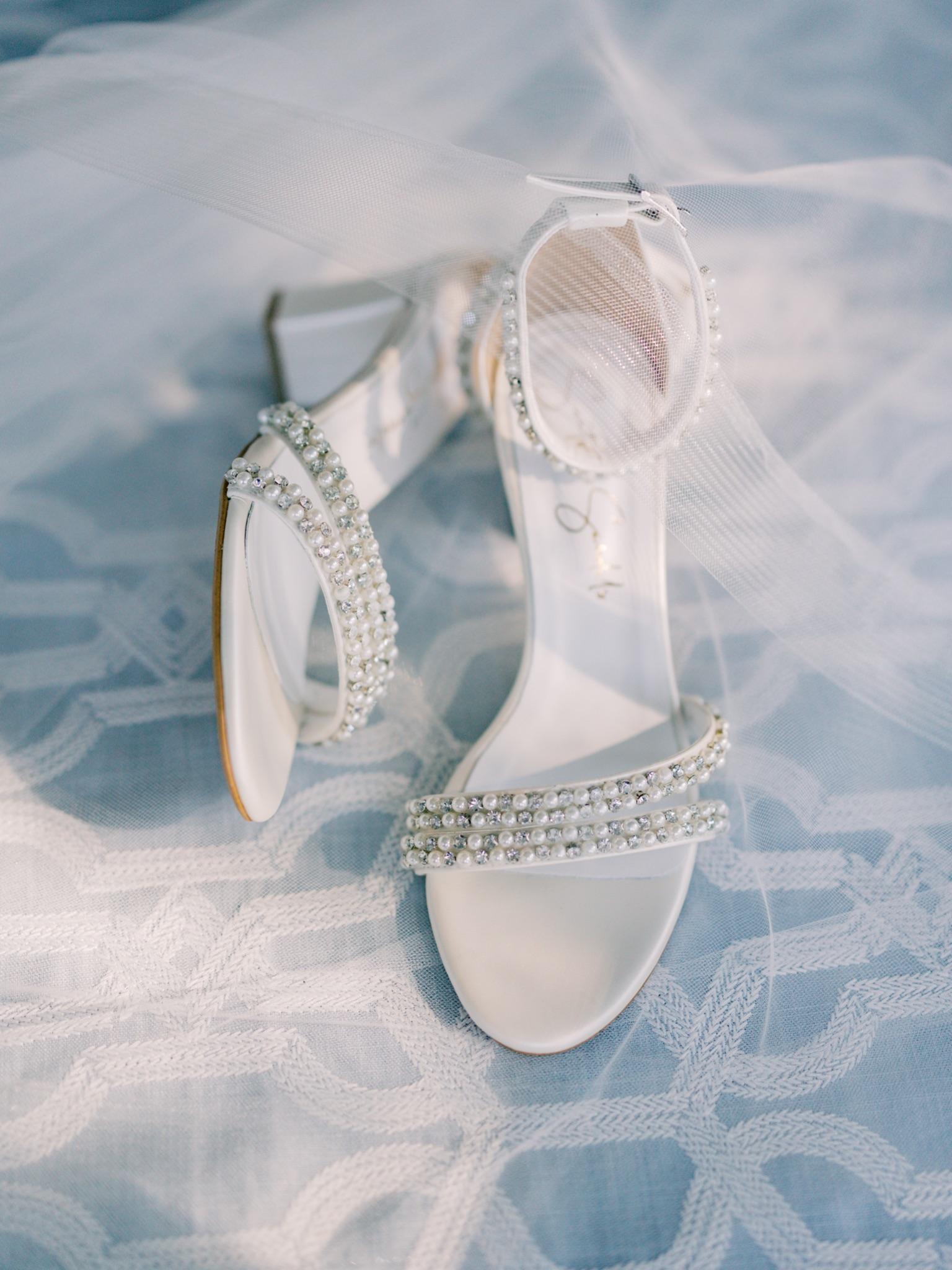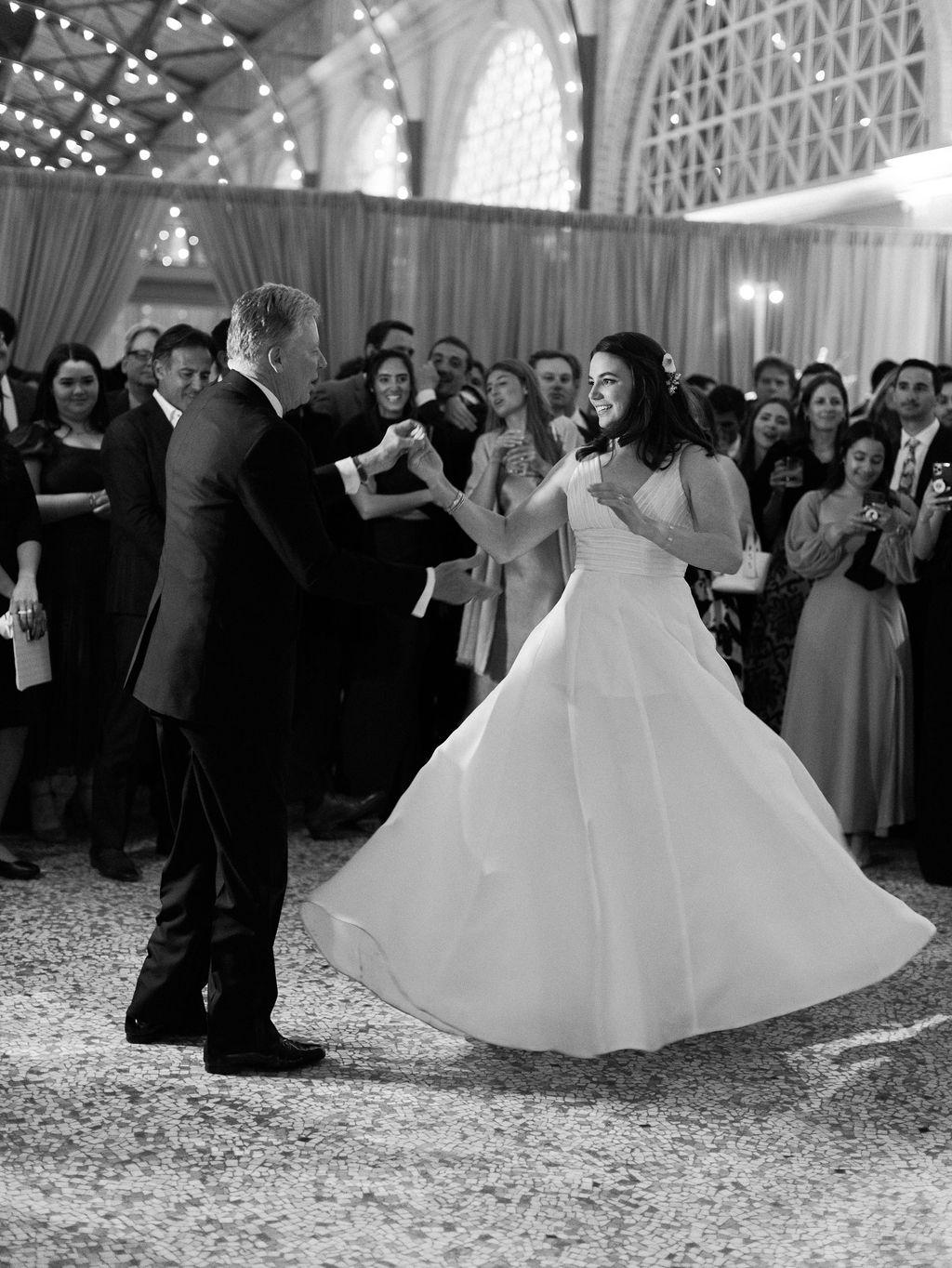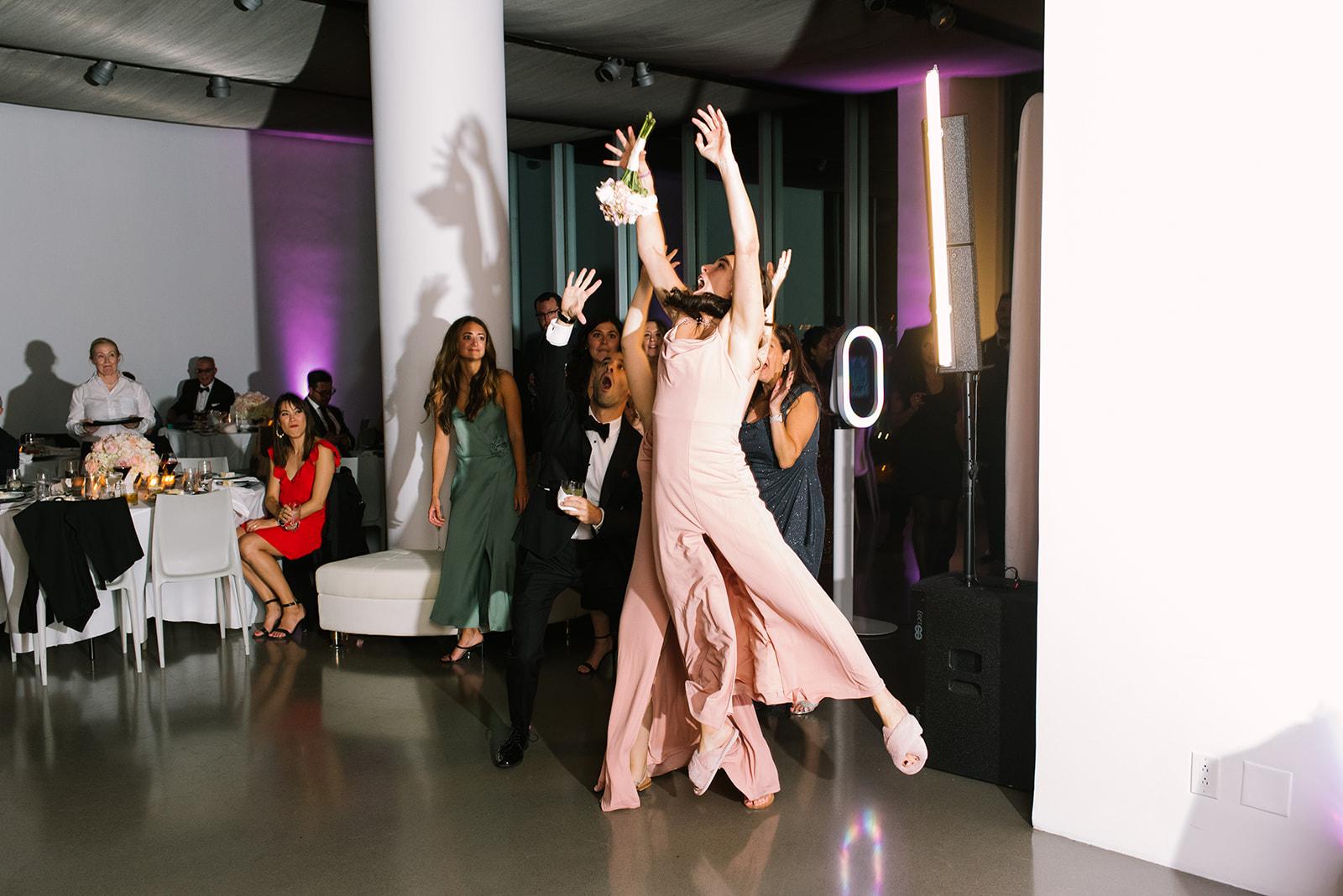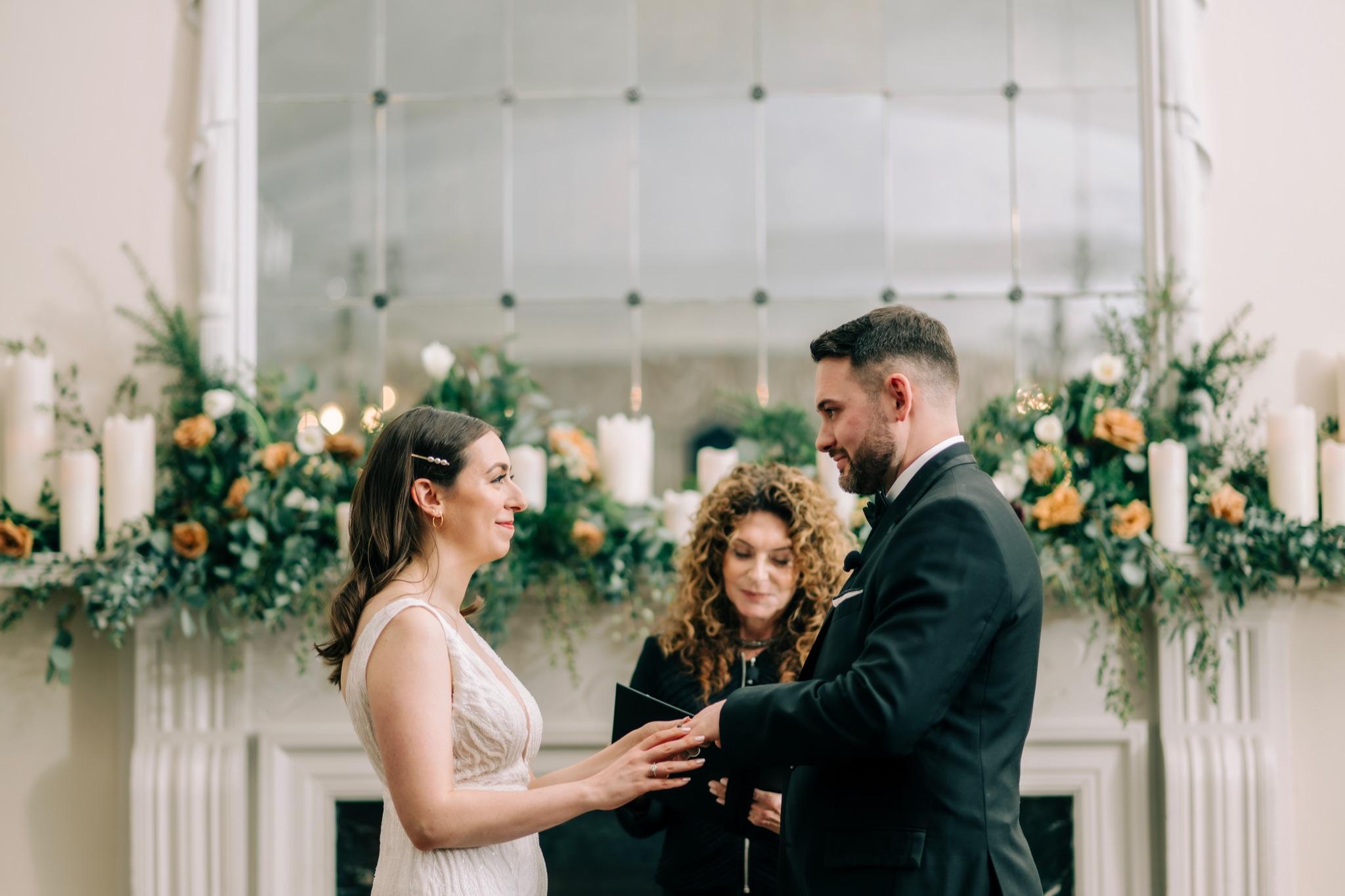
We’ve all heard the classic wedding rhyme: something old, something new, something borrowed, something blue. The rhyme, dating back to Victorian Era England, denotes everything a bride must wear or carry on that fateful trip down the aisle in order to have a successful wedding and subsequent successful marriage. Traditions like these often come to mind first when we think of a wedding, and for good reason. Some of the most dazzling ceremonies I’ve officiated have been steeped in familial, cultural, and social traditions. There is a sense of comfort and belonging that comes from carrying on customs like donning a borrowed hairpiece or being carried over the threshold by your new life partner. There may even be elements of your cultural heritage that you wish to integrate into your ceremony, furthering the role of tradition. If you are of Italian descent, for example, your guests joining you in a La Tarantella folk dance at your reception might be tremendously important.
It is okay too, though, if you and your partner find that some wedding traditions don’t quite serve the kind of wedding or the kind of marriage you want to have. For all of the traditional ceremonies I’ve been a part of, there have been just as many that incorporate modern twists or opt to avoid tradition altogether. You are also perfectly within your rights to blend traditional and modern elements; maybe you cannot wait to walk down the aisle wearing your grandmother’s veil, but the idea of coordinating wedding parties inspires more dread than excitement. What matters most is that each element of your wedding truly encapsulates the love you and your partner hold for one another. Whether tradition has a role to play—and if so, what kind of role—is entirely up to you.
Now, let’s take a look at three common wedding traditions and consider how 21st-century couples might integrate them into their big days (whether that be fully, through a modern spin, or through their intentional omission).
1) The Father-Daughter and Mother-Son Dances
These dances, which often occur near the beginning of a wedding reception, are intimate demonstrations of the love between a father and daughter and between a mother and son. They exhibit a sustained care and trust between parent and child even as that child blossoms in their union to another. However, many couples may not have their parents in their lives (whether that be due to a death, a strained relationship, or another unfortunate circumstance). Further, these dances rely heavily on gendered norms and the assumption of a heterosexual coupling, which may not be consistent with you and your partner’s relationship or beliefs. With some careful twisting, though, this sentimental tradition can suit any couple.
We all have someone who changed our life during our youth, whether they’re a parent of the opposite gender or not. So, maybe you go for a “best-friend” dance or a “grandfather-grandson” dance. By dropping the rigid structure of the original custom, modern couples can retain the intimacy factor without compromising their unique identities or experiences. As with every tradition on this list, is it also perfectly reasonable to decide that this tradition, even with a twist, just isn’t for you. If it doesn’t feel authentic to the love you and your soon-to-be spouse share, skip it!

2) The Bouquet and Garter Tosses
The bouquet and garter toss traditions allow for unmarried wedding guests to participate in the newlywed couple’s love. During a traditional bouquet toss, the unmarried women in attendance line up behind the bride, who tosses her bouquet over her shoulder into the throng. The recipient of the bouquet is said to be the next in the group to get married herself. A traditional garter toss is similar, but a bit more of a process. The groom must first remove the garter from the bride’s leg (some grooms opt to use their hands, while others use their teeth). The unmarried men must then line up behind the groom, who tosses the garter over his shoulder. As with the bouquet, whoever catches the garter is presumably next to marry.
Like the parent dance traditions, the bouquet and garter tosses are infused with gendered norms. Not every wedding has a bride and groom, much less these particular accessories to be tossed. Further, the garter toss tradition in particular is controversial for its sexual connotations, and may feel uncomfortable for a couple to perform in front of their guests. Therefore, for some couples, it might make more sense to toss a bowtie, a veil, or a wedding favor. If you do wish to replace the bouquet and garter for your tosses, just ensure that the items you select are: 1) easy to throw; 2) easy to catch; 3) not of such significant sentimental value that you will wish you hadn’t thrown them; and 4) speak in some way (however subtle!) to you and your partner’s union and the beautiful promise of marriage in general.

3) The Ring Exchange
Often considered one of the most integral parts of a wedding ceremony, the exchanging of wedding rings is an act that physically embodies the vows a couple has taken together. Wedding rings are meant to be worn by both parties for the duration of your marriage, a constant marker of the distinctive love you hold for your partner and the things you promised one another. As central as an exchange of rings may seem to any wedding ceremony, there are plenty of alternative physical reminders of your vows that you can opt for instead. Whether it be a financial strain, an indifference toward jewelry, or something else entirely, rings are certainly not the only things that can be ceremonially swapped on your big day.
If you’re considering a ring alternative, think back to the foundations of your relationship. Perhaps, on your first date, you and your partner bonded over a deep passion for reading. Instead of rings, then, you might exchange annotated copies of each other’s favorite novels. Or, if you both love the beach, exchanging engraved sunglasses might be the best fit. In the end, however unconventional they may be, the physical manifestations of your love should align with who you are as a couple. If rings don’t feel true to you or your partner’s identity, don’t be afraid to seek that alternative (or to let your vows do the meaning-making work all on their own!).

Your wedding day is meant to be just that: yours. Tradition can play a truly meaningful role in wedding ceremonies and receptions, but that is not always the case. Whether you are itching to fulfill your own something old and something new or yearning to find fresh ways to celebrate your big day, it is most important to prioritize crafting a wedding experience that you can look back on with no feeling other than pure joy.
@thevowwhisperer
Crafting Heartfelt Words Into Unforgettable Memories
Serving in Destinations Around the World
Crafting Heartfelt Words
Into Unforgettable Memories
Serving in Destinations Around the World